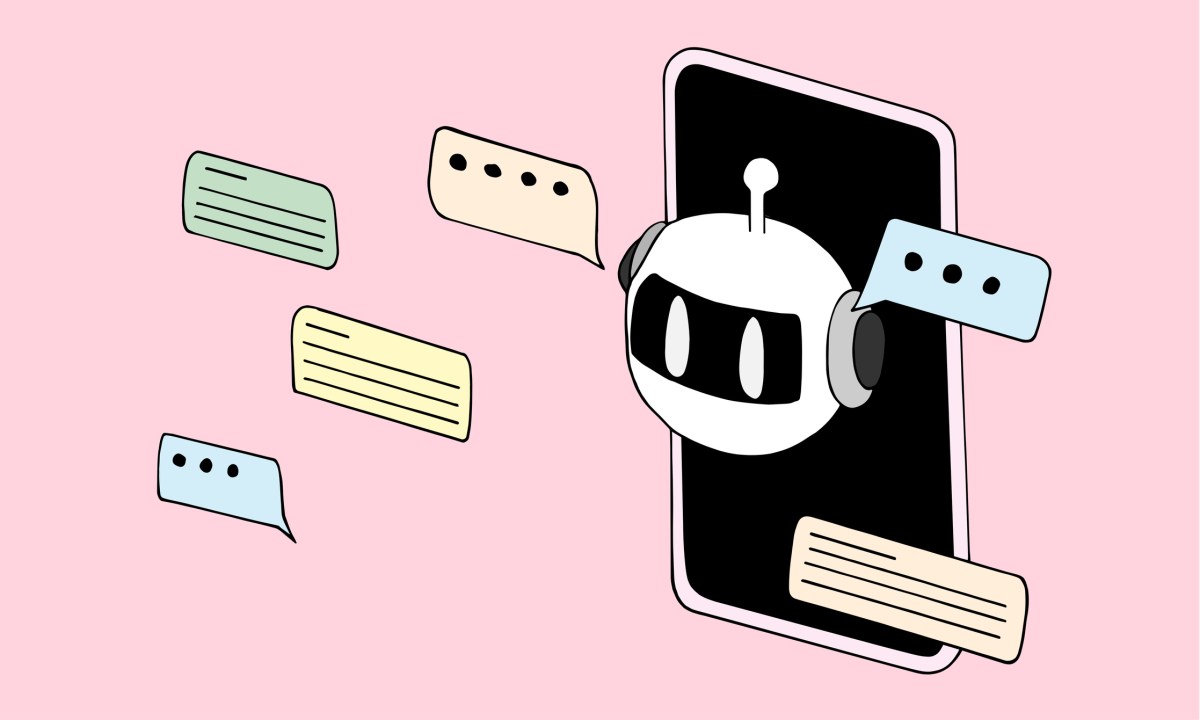Generative AI promised limitless creation—instead, it’s all about summarization
In the early days of generative AI—aka less than two years ago—we flocked to ChatGPT to marvel at all that we could create: silly haikus, Shakespearean sonnets, and Seinfeld scenes. Generative AI promised limitless production, and we used it to make more media, mindlessly. To blink things into existence. But the fun quickly wore off, and a new killer function has taken over: using generative AI to compress existing stuff and restate it in simplified form. We don’t live in a new creative age. We live in the age of summarization. It’s easy to look at this development skeptically: This is what we get from AI tools that haven’t (yet) delivered on their creative potential. But maybe these tools are simply responding to human desire. The more we create digitally, the faster we want to digest all of it. And this began long before anyone had ever heard of LLMs. It started with bloggers who chewed long newspaper articles back into pulp and spat out just the sweetest or most salacious nuggets. (Now, such blogs consist of little more than an image and a caption on Instagram.) Soon enough, the broader internet became faster, more skimmable too. YouTube added chapters and summaries to long videos, and Google searches now drop you straight into the relevant part of a video. As podcasts gained popularity, so did playback controls that allow you to listen at 1.2x, 1.5x, or even 3.5x speeds. On Spotify, labels launch pop songs alongside their sped-up version, perfect for disseminating across attention-challenged social media. On TikTok, some creators have gone a step further: You can watch recaps of entire theatrical films in a handful of two-minute clips. The optimal LinkedIn post? A summary. Digital tools have expedited media production, and the internet has expedited distribution. But instead of truly engaging with all the articles, videos, podcasts, and more, we simply snack on “content.” Faced with an all-you-can-eat buffet of words, images, and sounds, we taste everything yet savor nothing. LLMs have now factory-automated this phenomenon and are summarizing just about every aspect of life faster, more affordably, and, in some cases, better than humans. In 2022, “AI summarization” appeared in 33 earnings calls, according to data provider AlphaSense. Throughout 2023 and the first half of 2024, AI summarization was touted in 289 calls and appeared in 1,075 corporate press releases. Today, Zoom will summarize your meetings, Microsoft will summarize your spreadsheets and docs, and Apple will soon do the same for your mail and notes. Adobe can summarize any PDF and reframe any data into a chart, while Canva will reduce your endless brand document into pithy slides. Amazon condenses thousands of product reviews into a few pros and cons. Google, Bing, Anthropic, and Perplexity all summarize information from websites, intercepting potential readers. (The newspaper reporter was eaten by the blogger who was eaten by AI.) LinkedIn offers a button to summarize any article in your feed—so you don’t even need to read someone else’s summary post. Through a certain lens, summarization is a needed efficiency: It keeps us from drowning in our ocean of content, a flood tide that never stops rising. But when you employ AI as a mass compression algorithm for culture, something is inevitably lost in truncation. When CDs first came out, they were touted as a perfect digital copy of music. The digital version, however, was an interpretation of music by engineers: Bits of information were left out that captured the unique timbre of a vocal or drumbeat; complicated frequencies were abridged into simplified code. Decades later, we all recognize that vinyl—sound waves pressed in plastic, scratched into music through a needle—is closer to the original recording. In the same way, GPT compression—and other summarization tech—robs us of voice, humor, reasoning, the soft nuance that comes with actual human thought. There’s nothing wrong with saving time and slicing away filler, especially if it gets us off a screen. But we’ve read the studies—or summaries of them—about the addictive properties of digital engagement. Teens are now spending up to nine hours a day transfixed by pixels. The goal of all these efficiencies is to give us more time to scroll through even more content. And because the media we’re truncating tends to be the more complicated and nutritious stuff, our extra minutes are spent gorging on empty calories. And to what end? How many articles do you absorb via Perplexity or Google Overviews before opting to just not engage with the source anymore? How many work meeting summaries do you read before you decide there’s no reason to attend the meeting? Obsessed with the bare bones of plot, will we decide that character and complexity are too time-consuming—just too hard—to justify the effort? What does the great summarization mean in the long run? Journalists write for search engines? Films are just TikToks? So

In the early days of generative AI—aka less than two years ago—we flocked to ChatGPT to marvel at all that we could create: silly haikus, Shakespearean sonnets, and Seinfeld scenes. Generative AI promised limitless production, and we used it to make more media, mindlessly. To blink things into existence.
But the fun quickly wore off, and a new killer function has taken over: using generative AI to compress existing stuff and restate it in simplified form. We don’t live in a new creative age. We live in the age of summarization.
It’s easy to look at this development skeptically: This is what we get from AI tools that haven’t (yet) delivered on their creative potential. But maybe these tools are simply responding to human desire. The more we create digitally, the faster we want to digest all of it. And this began long before anyone had ever heard of LLMs.
It started with bloggers who chewed long newspaper articles back into pulp and spat out just the sweetest or most salacious nuggets. (Now, such blogs consist of little more than an image and a caption on Instagram.) Soon enough, the broader internet became faster, more skimmable too. YouTube added chapters and summaries to long videos, and Google searches now drop you straight into the relevant part of a video. As podcasts gained popularity, so did playback controls that allow you to listen at 1.2x, 1.5x, or even 3.5x speeds. On Spotify, labels launch pop songs alongside their sped-up version, perfect for disseminating across attention-challenged social media. On TikTok, some creators have gone a step further: You can watch recaps of entire theatrical films in a handful of two-minute clips. The optimal LinkedIn post? A summary.
Digital tools have expedited media production, and the internet has expedited distribution. But instead of truly engaging with all the articles, videos, podcasts, and more, we simply snack on “content.” Faced with an all-you-can-eat buffet of words, images, and sounds, we taste everything yet savor nothing.
LLMs have now factory-automated this phenomenon and are summarizing just about every aspect of life faster, more affordably, and, in some cases, better than humans. In 2022, “AI summarization” appeared in 33 earnings calls, according to data provider AlphaSense. Throughout 2023 and the first half of 2024, AI summarization was touted in 289 calls and appeared in 1,075 corporate press releases.
Today, Zoom will summarize your meetings, Microsoft will summarize your spreadsheets and docs, and Apple will soon do the same for your mail and notes. Adobe can summarize any PDF and reframe any data into a chart, while Canva will reduce your endless brand document into pithy slides. Amazon condenses thousands of product reviews into a few pros and cons. Google, Bing, Anthropic, and Perplexity all summarize information from websites, intercepting potential readers. (The newspaper reporter was eaten by the blogger who was eaten by AI.) LinkedIn offers a button to summarize any article in your feed—so you don’t even need to read someone else’s summary post.
Through a certain lens, summarization is a needed efficiency: It keeps us from drowning in our ocean of content, a flood tide that never stops rising. But when you employ AI as a mass compression algorithm for culture, something is inevitably lost in truncation. When CDs first came out, they were touted as a perfect digital copy of music. The digital version, however, was an interpretation of music by engineers: Bits of information were left out that captured the unique timbre of a vocal or drumbeat; complicated frequencies were abridged into simplified code. Decades later, we all recognize that vinyl—sound waves pressed in plastic, scratched into music through a needle—is closer to the original recording. In the same way, GPT compression—and other summarization tech—robs us of voice, humor, reasoning, the soft nuance that comes with actual human thought.
There’s nothing wrong with saving time and slicing away filler, especially if it gets us off a screen. But we’ve read the studies—or summaries of them—about the addictive properties of digital engagement. Teens are now spending up to nine hours a day transfixed by pixels. The goal of all these efficiencies is to give us more time to scroll through even more content. And because the media we’re truncating tends to be the more complicated and nutritious stuff, our extra minutes are spent gorging on empty calories.
And to what end? How many articles do you absorb via Perplexity or Google Overviews before opting to just not engage with the source anymore? How many work meeting summaries do you read before you decide there’s no reason to attend the meeting? Obsessed with the bare bones of plot, will we decide that character and complexity are too time-consuming—just too hard—to justify the effort?
What does the great summarization mean in the long run? Journalists write for search engines? Films are just TikToks? Songs consist of one verse and a hook? Is every artisan creator just the coal powering the next AI summary?
All I know is that nobody ever goes back to listening to the podcast at 1x speed. As we try to force our brains to compete with the endless capacity of the machine, we just move faster, faster, faster. And we wonder how we ever had the time to live so slowly in the first place.






















